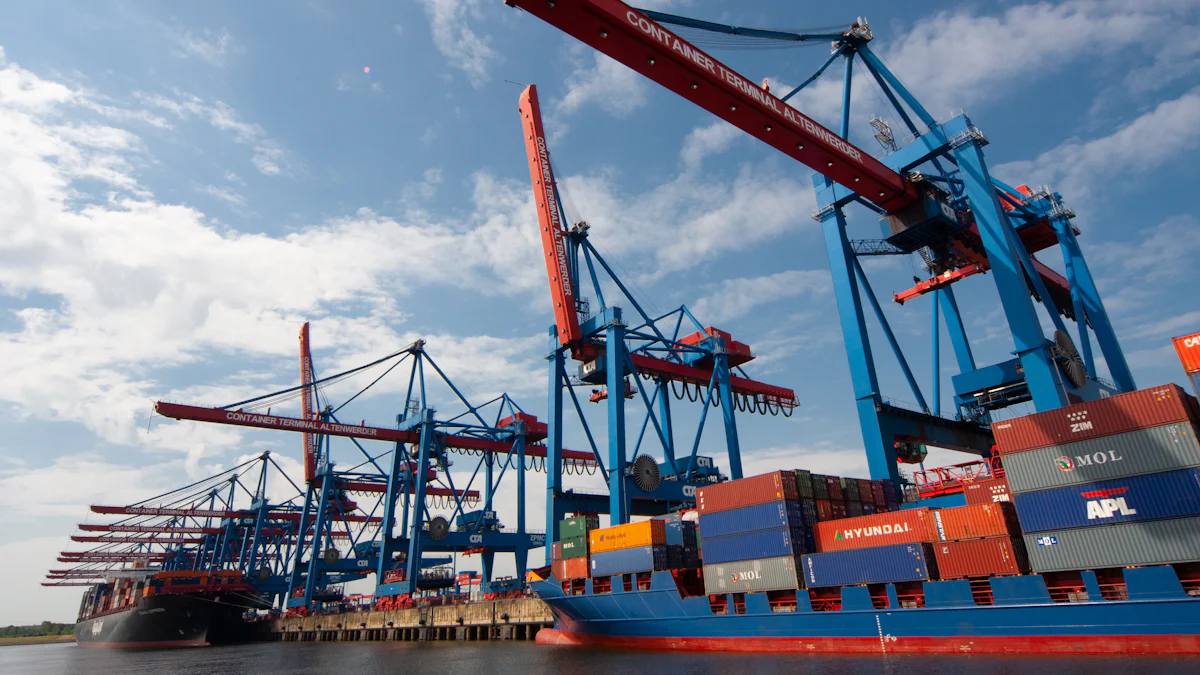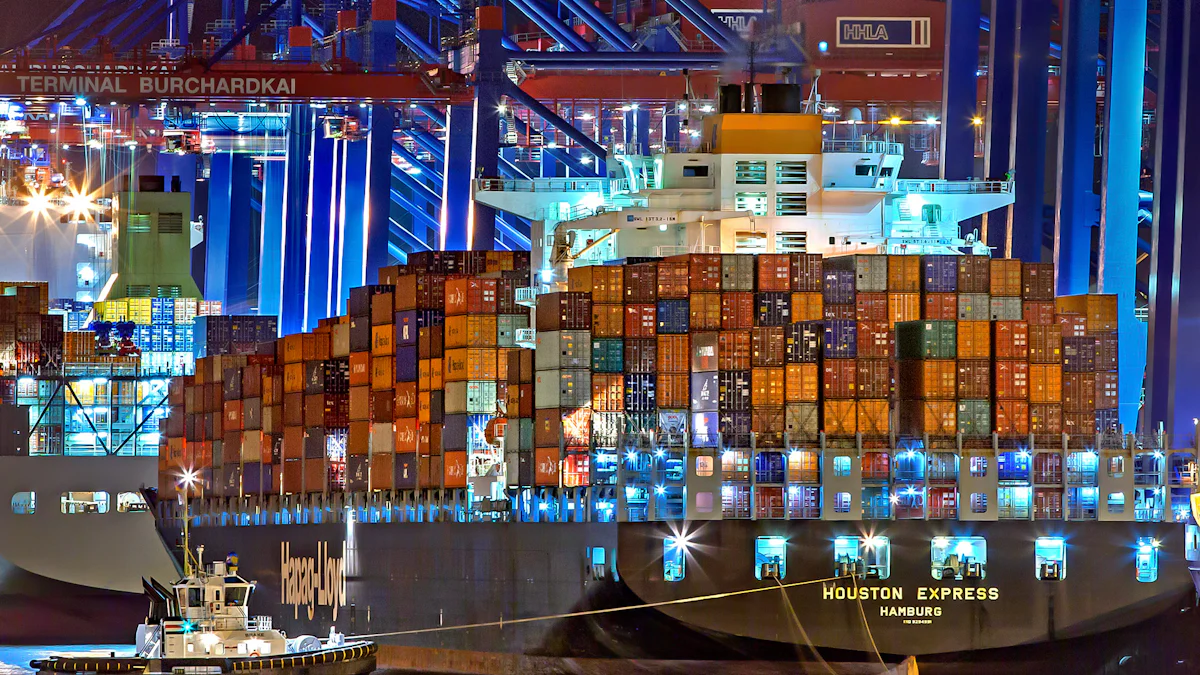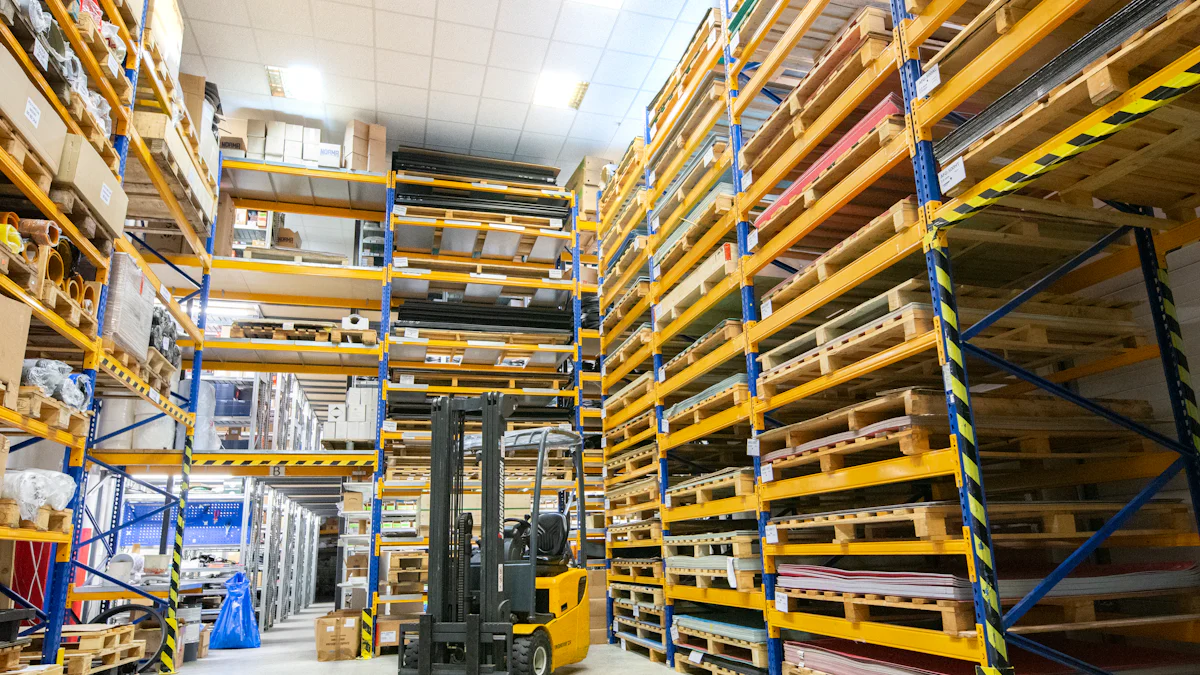Understanding the Different Types of Logistics Services

Logistics services encompass the planning, implementation, and management of the efficient flow of goods from origin to destination. Modern business relies heavily on these services to ensure timely deliveries and cost-effective operations. The global logistics market, valued at $9,833.8 billion in 2022, is projected to reach $16,794.7 billion by 2032. This growth underscores the critical role logistics play in today's economy. A wide variety of logistics services exist, each tailored to meet specific needs, from transportation and warehousing to freight forwarding and reverse logistics.
Transportation Logistics

Road Transportation
Advantages of Road Transportation
Flexibility: Road transportation offers unparalleled flexibility. Trucks can reach remote areas where other modes cannot.
Speed: For short to medium distances, road transport is often faster than rail or sea.
Door-to-Door Service: Direct delivery from origin to destination without the need for transshipment.
Cost-Effective for Short Distances: Economical for short hauls and small shipments.
Disadvantages of Road Transportation
Limited Capacity: Trucks have limited cargo capacity compared to rail or sea transport.
Environmental Impact: Higher emissions per ton-mile than rail or sea.
Traffic Congestion: Susceptible to delays due to traffic jams and road conditions.
Higher Costs for Long Distances: More expensive than rail or sea for long-distance transport.
Air Transportation
Advantages of Air Transportation
Speed: Fastest mode of transport for long distances.
Global Reach: Capable of reaching international destinations quickly.
High Security: Enhanced security measures reduce the risk of theft and damage.
Minimal Warehousing: Reduces the need for warehousing due to faster delivery times.
Disadvantages of Air Transportation
High Costs: Most expensive mode of transport.
Limited Capacity: Restrictions on the size and weight of cargo.
Environmental Concerns: Significant carbon footprint.
Weather Dependent: Susceptible to delays due to weather conditions.
Sea Transportation
Advantages of Sea Transportation
Economical: Most cost-effective for large volumes and long distances.
High Capacity: Capable of carrying large and heavy cargo.
Global Accessibility: Access to international markets through major ports.
Energy Efficient: Lower fuel consumption per ton-mile compared to road and air.
Disadvantages of Sea Transportation
Slow Speed: Long transit times compared to air and road.
Port Limitations: Dependent on port infrastructure and accessibility.
Complex Documentation: Requires extensive paperwork and customs clearance.
Weather and Piracy Risks: Vulnerable to weather conditions and piracy threats.
Rail Transportation
Advantages of Rail Transportation
High Capacity: Rail transport can handle large volumes of cargo. Trains can carry as many as 100 wagons, making rail ideal for bulk shipments.
Fuel Efficiency: Rail transport burns less fuel per ton-mile compared to road vehicles. This efficiency translates to lower transportation costs and reduced environmental impact.
Cost-Effective for Long Distances: Rail transport is economical for long-distance hauls. The cost per ton-mile decreases with distance, making rail a preferred choice for cross-country shipments.
Reliability: Rail schedules are less affected by traffic congestion and weather conditions. Trains run on fixed schedules, ensuring timely deliveries.
Disadvantages of Rail Transportation
Limited Infrastructure: Rail networks are not as extensive as road networks. Limited infrastructure can restrict access to certain regions, requiring additional transshipment.
Transshipment Delays: Rail transport often requires transshipment to other modes of transport. This process can be time-consuming and may lead to delays.
Higher Initial Costs: Establishing rail transport involves higher initial costs. Investments in rail infrastructure and equipment can be substantial.
Flexibility Issues: Rail transport lacks the flexibility of road transport. Fixed routes and schedules limit the ability to make last-minute changes or direct deliveries.
Warehousing Services

Warehousing forms a crucial part of logistics services. Proper warehousing ensures the safe storage and efficient handling of goods.
Types of Warehouses
Public Warehouses
Public warehouses offer storage solutions to multiple clients. These facilities provide flexible leasing options. Businesses can rent space on a short-term or long-term basis. Public warehouses often include additional logistics services like inventory management and distribution.
Private Warehouses
Private warehouses are owned and operated by individual companies. These warehouses cater exclusively to the needs of the owning company. Private warehouses offer greater control over storage conditions and inventory management. Companies with large volumes of goods often prefer private warehouses for their tailored logistics services.
Bonded Warehouses
Bonded warehouses store imported goods before customs duties are paid. These facilities operate under the supervision of customs authorities. Businesses can store goods in bonded warehouses without immediate payment of duties. This service provides financial flexibility and aids in managing cash flow.
Key Functions of Warehousing
Storage
Storage is the primary function of any warehouse. Proper storage ensures the safety and preservation of goods. Warehouses use various storage methods, including pallet racking and shelving. Efficient storage systems optimize space utilization and facilitate easy access to goods.
Inventory Management
Inventory management involves tracking and controlling stock levels. Effective inventory management prevents stockouts and overstocking. Warehouses use advanced software systems for real-time inventory tracking. Accurate inventory management enhances the efficiency of logistics services.
Order Fulfillment
Order fulfillment encompasses the picking, packing, and shipping of orders. Warehouses play a vital role in ensuring timely and accurate order fulfillment. Efficient order fulfillment processes improve customer satisfaction. Warehouses often integrate with transportation logistics services to streamline delivery operations.
Freight Forwarding
Role of Freight Forwarders
Coordination of Shipments
Freight forwarders manage the logistics of transporting goods from origin to destination. They coordinate with various carriers to ensure timely and efficient delivery. Freight forwarders handle the complexities of multimodal transportation. This involves combining different modes such as road, rail, sea, and air.
Documentation and Customs Clearance
Freight forwarders prepare and process all necessary shipping documents. These documents include bills of lading, commercial invoices, and packing lists. Freight forwarders also manage customs clearance procedures. They ensure compliance with international trade regulations and facilitate smooth border crossings.
Benefits of Using Freight Forwarders
Cost Efficiency
Freight forwarders leverage their relationships with carriers to negotiate better rates. This results in cost savings for businesses. Freight forwarders optimize shipping routes and consolidate shipments. This reduces overall transportation costs.
Expertise and Network
Freight forwarders possess extensive knowledge of global shipping regulations. Their expertise ensures compliance with international trade laws. Freight forwarders have a vast network of carriers and agents. This network provides access to reliable and efficient transportation options.
Third-Party Logistics (3PL)
Definition and Scope
Third-Party Logistics (3PL) involves outsourcing logistics and supply chain management functions to specialized service providers. These providers handle various logistics activities, allowing businesses to focus on their core operations.
Services Offered by 3PL Providers
3PL providers offer a wide range of services:
Transportation Management: Coordination of shipments using different modes of transport.
Warehousing and Distribution: Storage, inventory management, and order fulfillment.
Freight Forwarding: Handling documentation and customs clearance for international shipments.
Value-Added Services: Packaging, labeling, and assembly.
These services streamline logistics operations and enhance efficiency.
Industries Benefiting from 3PL
Several industries benefit from 3PL services:
Retail and E-commerce: Efficient order fulfillment and delivery.
Manufacturing: Just-in-time delivery of raw materials and components.
Healthcare: Secure and timely distribution of medical supplies.
Automotive: Management of complex supply chains and parts distribution.
Each industry leverages 3PL expertise to optimize logistics processes.
Advantages of 3PL
Cost Savings
3PL providers help businesses reduce costs:
Economies of Scale: Access to bulk shipping rates and reduced transportation costs.
Resource Optimization: Efficient use of warehousing and transportation resources.
Reduced Capital Investment: No need to invest in logistics infrastructure and technology.
These cost savings improve the bottom line and enhance competitiveness.
Focus on Core Business
Outsourcing logistics functions allows businesses to concentrate on their primary activities:
Strategic Focus: Allocation of resources to core competencies and strategic initiatives.
Operational Efficiency: Streamlined logistics operations managed by experts.
Scalability: Ability to scale logistics operations based on business growth.
This focus on core business activities drives innovation and growth.
Reverse Logistics
Definition and Importance
Reverse logistics involves the process of moving goods from their final destination back to the manufacturer or supplier. This process plays a crucial role in managing returns, recycling, and disposal of products. Efficient reverse logistics can enhance customer satisfaction and reduce environmental impact.
Return Management
Return management focuses on handling returned goods efficiently. Businesses need to process returns quickly to maintain customer trust. Effective return management includes inspecting, sorting, and restocking items. Companies often use advanced software to track returns and manage inventory levels.
Recycling and Disposal
Recycling and disposal are essential aspects of reverse logistics. Companies must ensure proper disposal of non-reusable items to comply with environmental regulations. Recycling helps in recovering valuable materials and reducing waste. Many businesses partner with specialized firms for eco-friendly disposal solutions.
Challenges in Reverse Logistics
Reverse logistics presents several challenges that businesses must address to optimize operations.
Cost Management
Managing costs in reverse logistics can be complex. Returns, recycling, and disposal involve additional expenses. Companies need to balance cost-efficiency with service quality. Implementing automated systems can help in tracking and reducing costs.
Process Efficiency
Achieving process efficiency in reverse logistics requires streamlined operations. Manual processes can lead to delays and errors. Businesses should invest in technology to automate reverse logistics tasks. Efficient processes ensure timely handling of returns and minimize disruptions.
"By using logistics services, a manufacturing or retailing company has to rely on the reliability, competency, and honesty of logistics service providers." - Unknown
Effective reverse logistics can significantly impact a company's reputation and brand strength.
Packaging and Tracking Services
Packaging Design and Manufacturing
Importance of Packaging in Logistics
Packaging plays a pivotal role in logistics. Proper packaging ensures the safety and integrity of goods during transit. Packaging protects items from damage caused by handling, environmental factors, and transportation conditions. Effective packaging reduces the risk of product loss and enhances customer satisfaction. Businesses must invest in quality packaging to maintain the value and condition of their products.
Types of Packaging Solutions
Various packaging solutions cater to different logistics needs. Common types include:
Corrugated Boxes: Widely used for shipping due to their strength and durability.
Pallets: Facilitate easy handling and storage of bulk goods.
Shrink Wrap: Secures items on pallets and protects against dust and moisture.
Foam Inserts: Provide cushioning for fragile items.
Crates: Offer robust protection for heavy and oversized goods.
Each packaging type serves specific purposes, ensuring the safe and efficient transport of goods.
Tracking and Monitoring Capabilities
Real-time Tracking
Real-time tracking technology allows businesses to monitor shipments throughout the supply chain. GPS devices and RFID tags provide accurate location data. Real-time tracking enables proactive management of delivery schedules. Businesses can address delays and reroute shipments as needed. This technology enhances transparency and reliability in logistics operations.
Benefits of Monitoring Systems
Monitoring systems offer several benefits for logistics management:
Enhanced Visibility: Provides detailed insights into shipment status and location.
Improved Efficiency: Streamlines operations by identifying bottlenecks and optimizing routes.
Increased Security: Reduces the risk of theft and loss through constant surveillance.
Better Customer Service: Allows businesses to provide accurate delivery updates to customers.
Implementing advanced monitoring systems strengthens logistics processes and boosts overall performance.
Logistics services encompass various essential functions. These include transportation, warehousing, freight forwarding, third-party logistics, reverse logistics, and packaging and tracking. Each type of logistics services offers unique advantages and challenges. Selecting the appropriate logistics services ensures business efficiency and customer satisfaction. Future trends in logistics services will likely focus on automation, sustainability, and enhanced tracking capabilities. Businesses must stay informed about these trends to remain competitive.
See Also
Unveiling the Top Global Logistics Companies Guide
Transforming Supply Chain: Logistics Innovation's Influence
Benefits of Joining Premier Logistics Webinars
